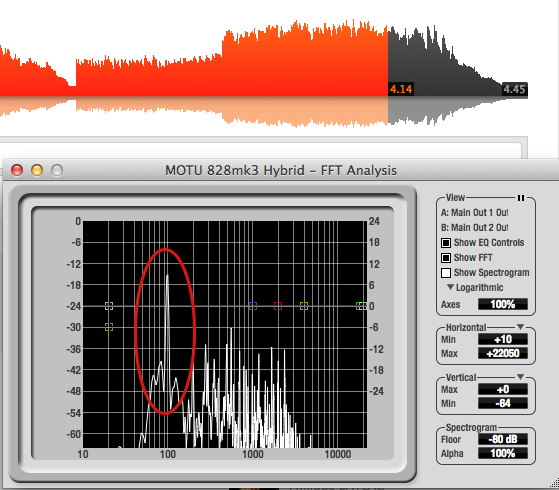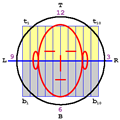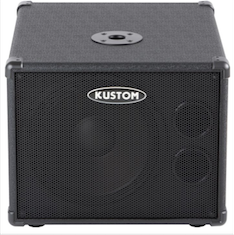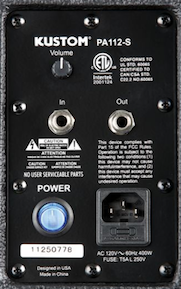Continuing with the Grainger theme: Here's The Merry King, originally written for piano in 1905 and sketched out for orchestra in 1936. The instrumentation I've recorded is for strings and piano. I'm also working on the full orchestral version which adds winds and brass.
This is recorded with VSL Orchestra Violins and uses VSL Chamber Violins for divisi. There is also a solo cello as well.
All with VIPro instruments recorded in ORF Teldex Studio.
https://soundcloud.com/tensivity/grainger-the-merry-king-ve
This version is in a larger venue (Gateshead Sage One):
https://soundcloud.com/tensivity/grainger-the-merry-king-ve-1
Feedback is always appreciated.
Michael
- It is currently Tue Dec 16, 2025 9:54 am • All times are UTC - 5 hours [ DST ]
Attention:
Welcome to the old forum. While it is no longer updated, there is a wealth of information here that you may search and learn from.
To partake in the current forum discussion, please visit https://forums.presonus.com
Grainger: The Merry King
4 posts
• Page 1 of 1
Grainger: The Merry King
Michael
Notion 4 Mac
VSL Dimension Strings
VSL Special Edition 1,2, Plus
Miroslav Philharmonik
Apple Logic
Notion 4 Mac
VSL Dimension Strings
VSL Special Edition 1,2, Plus
Miroslav Philharmonik
Apple Logic
-

idiotSavant - Posts: 302
- Joined: Tue Dec 18, 2012 8:20 pm
- Location: San Francisco, CA
Re: Grainger: The Merry King
These sound considerably better, but there is a hotspot in the Double Bass centered around 100-Hz, as you can see in the following screen capture of the second version with the CueMix FX (MOTU) FFT Analyzer running . . .
[NOTE: The Double Bass hotspot is present in both versions . . . ]

The Grand Piano and Cello play the same note(s) every so often, but they do not have the hotspot, so it is only the Double Bass . . .
There are several producing strategies for constraining the Double Bass, including using a limiter, compressor, or brickwall limiter like the T-RackS Brickwall Limiter (IK Multimedia), where another possibility is using an equalizer on the Double Bass to lower the dynamic range selectively around the hotspot, but if the Double Bass is forte at the time, you could try a lower dynamic value like pianissimo or lower for the particular notes, which are somewhere in the range of E2 to A2 in standard US scientific pitch notation based on standard concert pitch ("Concert A" = 440-Hz), which for reference is not the NOTION 4 default "Global tuning" value, so it needs to be set manually via NOTION 4 Preferences ("Global" pane) if you want to use standard concert pitch . . .
[NOTE: This is the link to the FREE version of T-RackS Custom Shop, and it includes an equalizer and a full metering section. The metering section, which runs as a VST effects plug-in in NOTION 4, is very useful for producing and mixing, and the various meters can be tailored for different genres, as well as response times and so forth. The T-RackS vintage signal processors are very precise emulations of industry standard vintage signal processors that for the most part were developed for broadcasting use and happened to have melodic characteristics, even though the primary focus for broadcasting use was to keep radio and television audio signals within acceptable ranges as determined by the Federal Communications Commission (FCC), where the Double Bass hotspot is something that would violate FCC broadcasting standards, hence there are vintage signal processors that handle it in a melodic way, noting that the T-RackS Brickwall limiter is newer, but it works nicely using the "Clean" preset when the output level is set lower, where if you want to constrain the Double Bass to being no louder than -6dB without clipping or distorting, this is one way to do it . . . ]
T-RackS CS (IK Multimedia)
Other than the hotspot in the Double Bass, I like the way everything sounds, and it is very realistic, which is fabulous . . .
Fabulous!
P. S. Do you have subwoofers for your studio monitor system?
[NOTE: The Double Bass hotspot is present in both versions . . . ]

The Grand Piano and Cello play the same note(s) every so often, but they do not have the hotspot, so it is only the Double Bass . . .
There are several producing strategies for constraining the Double Bass, including using a limiter, compressor, or brickwall limiter like the T-RackS Brickwall Limiter (IK Multimedia), where another possibility is using an equalizer on the Double Bass to lower the dynamic range selectively around the hotspot, but if the Double Bass is forte at the time, you could try a lower dynamic value like pianissimo or lower for the particular notes, which are somewhere in the range of E2 to A2 in standard US scientific pitch notation based on standard concert pitch ("Concert A" = 440-Hz), which for reference is not the NOTION 4 default "Global tuning" value, so it needs to be set manually via NOTION 4 Preferences ("Global" pane) if you want to use standard concert pitch . . .
[NOTE: This is the link to the FREE version of T-RackS Custom Shop, and it includes an equalizer and a full metering section. The metering section, which runs as a VST effects plug-in in NOTION 4, is very useful for producing and mixing, and the various meters can be tailored for different genres, as well as response times and so forth. The T-RackS vintage signal processors are very precise emulations of industry standard vintage signal processors that for the most part were developed for broadcasting use and happened to have melodic characteristics, even though the primary focus for broadcasting use was to keep radio and television audio signals within acceptable ranges as determined by the Federal Communications Commission (FCC), where the Double Bass hotspot is something that would violate FCC broadcasting standards, hence there are vintage signal processors that handle it in a melodic way, noting that the T-RackS Brickwall limiter is newer, but it works nicely using the "Clean" preset when the output level is set lower, where if you want to constrain the Double Bass to being no louder than -6dB without clipping or distorting, this is one way to do it . . . ]
T-RackS CS (IK Multimedia)
Other than the hotspot in the Double Bass, I like the way everything sounds, and it is very realistic, which is fabulous . . .
Fabulous!
P. S. Do you have subwoofers for your studio monitor system?
-

Surfwhammy - Posts: 1137
- Joined: Thu Oct 14, 2010 4:45 am
Re: Grainger: The Merry King
SW thanks for the reply. I don't use a sub but I've just purchased a new pair of near field monitors which should help significantly. I'll try to isolate that loud frequency in the double bass.
Michael
Notion 4 Mac
VSL Dimension Strings
VSL Special Edition 1,2, Plus
Miroslav Philharmonik
Apple Logic
Notion 4 Mac
VSL Dimension Strings
VSL Special Edition 1,2, Plus
Miroslav Philharmonik
Apple Logic
-

idiotSavant - Posts: 302
- Joined: Tue Dec 18, 2012 8:20 pm
- Location: San Francisco, CA
Re: Grainger: The Merry King
idiotSavant wrote:SW thanks for the reply. I don't use a sub but I've just purchased a new pair of near field monitors which should help significantly. I'll try to isolate that loud frequency in the double bass.
Glad to help!
One of the more useful aspects of the Kustom PA112S powered deep bass subwoofers is that they have a full-range (a.k.a., non-filtered) pass-through port, which makes them easy to connect to commercial-off-the-shelf (COTS) studio monitors . . .
[NOTE: The Kustom PA112S units are monaural, so you need two of them, one for the left channel and one for the right channel. The "In" port connects to the line output for the respective channel, and then you run a 1/4" TRS cable from the "Out" port to the respective COTS studio monitor. You can get GLS Audio cables that have different ending connectors if the COTS studio monitors use a different type of connector, where the two most common connectors are 1/4" TRS and XLR . . . ]

Kustom PA112S Self-powered 12" Deep Bass Subwoofer

The fact of the matter is that there are no COTS full-range studio monitors currently made anywhere on this planet at the dawn of the early-21st century, even when they have matching deep bass subwoofers, which includes what one might suppose is the "high-end" JBL LSR6300 Series studio monitor system that has a discount price of approximately $7,500 (US) when you include the controlling and calibrating hardware and software options . . .
[NOTE: In fairness, I think that one can push the JBL deep bass subwoofers into the subsonic range, but one of them costs approximately $1,700 (US) at typical discount pricing, while the typical discount price of a Kustom PA112S deep bass subwoofer is approximately $200 (US), and the Kustom PA112S unit has a specified frequency range of 30-Hz to 150-Hz, which is lower than the JBL unit. So long as you can run them at a low volume level, you can push them into the subsonic range, and I have no particular problems with the "high-end" JBL studio monitor system, except that it is very expensive. The Kustom units (KPC15P and PA112S) cost approximately $800 (US); the Behringer units and ARC System 2 (IK Multimedia) cost another $900 (US); and the various cables, Tripp-Lite ISOBARULTRA surge protectors, and Nady DSM-1 Digital SPL Meter add another $300 (US), for a total of approximately $2,000 (US), which is approximately one quarter of the cost of "high-end" JBL studio monitor system, except that the Kustom units are balanced nicely, and since you can control the level of the deep bass subwoofers separately from the levels of the KCP15P self-powered 15" two-way units, you can do a reasonably accurate "ballpark" calibration either (a) by ear or (b) with an inexpensive app for the iPad, iPhone, or iPod touch like the basic version of AudioTools (Studio Six Digital), which includes an emulated analog SPL Meter, although ideally you need an external rack mounted two-channel equalizer if you want the studio monitor system to be calibrated regardless of the audio application you are using at any given time . . . ]
JBL LSR6300 Series
[NOTE: Another Notion Music FORUM member (hselburn) told me about AudioTools for iOS in a different topic, so I got it at the iTunes App Store, and the emulated analog SPL Meter matches the readings of the Nady DSM-1 SPL Meter, so I like it, and it costs less than the Nady DSM-1 SPL Meter, which is a bonus since it has other useful components and capabilities. I tested it with a second generation iPad and it works very nicely using the built-in iPad microphone. . . ]
AudioTools for iOS (Studio Six Digital)
Some COTS studio monitor systems use a particularly deceptive bit of trickery where they combine the deep bass for the left and right channels to make an arbitrary monaural signal, which is fed to a single deep bass subwoofer based on the patently goofy idea that deep bass effectively is monaural, hence one does not need a separate deep bass subwoofer for each channel. This is done because the "big and heavy" rule of acoustic physics cannot be violated, which in turn makes deep bass subwoofers expensive to manufacture and to ship, hence the sneaky weasel strategy to keep everything as small and lightweight as possible, even when the result essentially is nonsense . . .
The problem with the arbitrary monaural single deep bass subwoofer logic is that the COTS studio monitor systems that have a single deep bass subwoofer option arbitrarily premix the deep bass, thereby making it impossible for the producer, audio engineer, or mastering engineer to fine-tune the deep bass . . .
The Kustom PA112S units are approximate $200 (US) each, which is very reasonable and less than most COTS deep bass subwoofers; and since they are vastly overpowered, you run them at a very low level, perhaps 1 or 2 on a volume level running from 0 to 10; and they sit on the floor, hence do not take a lot of space . . .
The subsonic and deep bass information is present in sampled sound libraries, but you only hear it when you have a calibrated full-range studio monitor system where the low-frequency response is pushed into the subsonic region, which depending on the definition one uses, this is the region from 10-Hz to 20-Hz, although some folks define "subsonic" to be anything under approximately 30-Hz . . .
Nevertheless, you can see it in the CueMix FX FFT Analyzer, as shown in the following YouTube video of the basic instrumentation for a Surf Whammys song that was done with SampleTank (IK Multimedia) and MachFive 3 (MOTU) virtual instruments in NOTION 3, along with the NOTION 3 Electric Guitar for rhythm guitar chords. And there is a T-RackS Brickwall Limiter as the final signal processor for the Main stereo output, which uses a graceful setting (just enough to keep everything within bounds while allowing a tiny bit of flexibility) . . .
[NOTE: The Fast Fourier Transform (FFT) Analysis is shown in the window at the lower right in the YouTube music video . . . ]
"I Want To Dance With You" (The Surf Whammys) -- CueMix FX Analysis, Basic Rhythm Section -- YouTube music video
THOUGHTS
There are different strategies for a calibrated full-range studio monitor system that is pushed into the subsonic region, where the goal is to have a flat equal loudness curve running from 10-Hz to 20,000-Hz at 85 dB SPL; and for a small studio, augmenting a pair of COTS bookshelf studio monitors with a pair of Kustom PA112 self-powered 12" deep bass subwoofers works when you have some relatively inexpensive metering equipment like AudioTools (Studio Six Digital) and at least an external rack-mount two-channel equalizer . . .
And for reference, the subsonic material typically is felt rather than heard, which is the reason that it is not so easy to perceive when you listen with studio quality headphones like the SONY MDR-7506 (a personal favorite) . . .
The subsonic and deep bass is present in all professionally sampled sound libraries--including the NOTION Bundled and Expansion Sounds, of course--but you only hear it when your studio monitor system can reproduce it accurately . . .
The subsonic and deep bass is so important that using an analogy, metaphor, or simile, trying to produce, mix, and master without it is like trying to take a full-color photograph with a camera that has a blue filter attached or something similar . . .
I hear the potential in your new songs, and I can see it on the various meters I use here in the sound isolation studio, which is the reason I am providing so much detail on the vast importance of having a calibrated full-range studio monitor system, which is fabulous . . .
Fabulous!
-

Surfwhammy - Posts: 1137
- Joined: Thu Oct 14, 2010 4:45 am
4 posts
• Page 1 of 1
Who is online
Users browsing this forum: No registered users and 3 guests